With the Olympics being avidly watched over the past couple of weeks, there may be some curiosity about what elite sports were like in the time between the original Greek games and the well-loved extravaganza of today. In other words, what would the Olympics have looked like in the Middle Ages?
Alas, there were no medieval Olympics, but there were competitive sports. Perhaps the best-known events pitting athletes against each other were tournaments- lavish gatherings of trained knights who fought each other with various weapons to garner fame and fortune.

A Tournament Contest, about 1560–70, unknown artist. Tempera colors and gold on parchment, 16 15/16 x 11 3/8 in. The J. Paul Getty Museum, Ms. Ludwig XV 14, fols. 18v-19. Digital image courtesy of the Getty’s Open Content Program
These knights were not just performing superb athletics, they were also practicing skills that were integral to their lifestyle and livelihood. Learning how to fight with sword, dagger, and lance, on foot and on horseback, was aimed towards the day when a knight might be asked to take up arms in war on behalf of his lord.

The Tournament before the Castle of Pucelles, about 1320–40, unknown artist. Tempera colors, gold and silver on parchment, 15 1/2 x 11 3/4 in. The J. Paul Getty Museum, Ms. Ludwig XV 5, fol. 283v. Digital image courtesy of the Getty’s Open Content Program
Some of these knights traveled from place to place across Europe looking to participate in tournaments, much as athletes today range the world for their meets. They could also become just as famous and crowd-pleasing as the icons of today, like Simone Biles or Usain Bolt. One example is Jacques de Lalaing (1421-1453), who never lost a tournament in the many he fought over the course of his career. In this image, he participates in a tournament where the agreed-upon weapon was the polaxe (a fighting ax with a hammer facing opposite the blade). He was so sure of himself, in fact, that he fought with armor on only one leg, essentially giving himself a “handicap” (he still won).
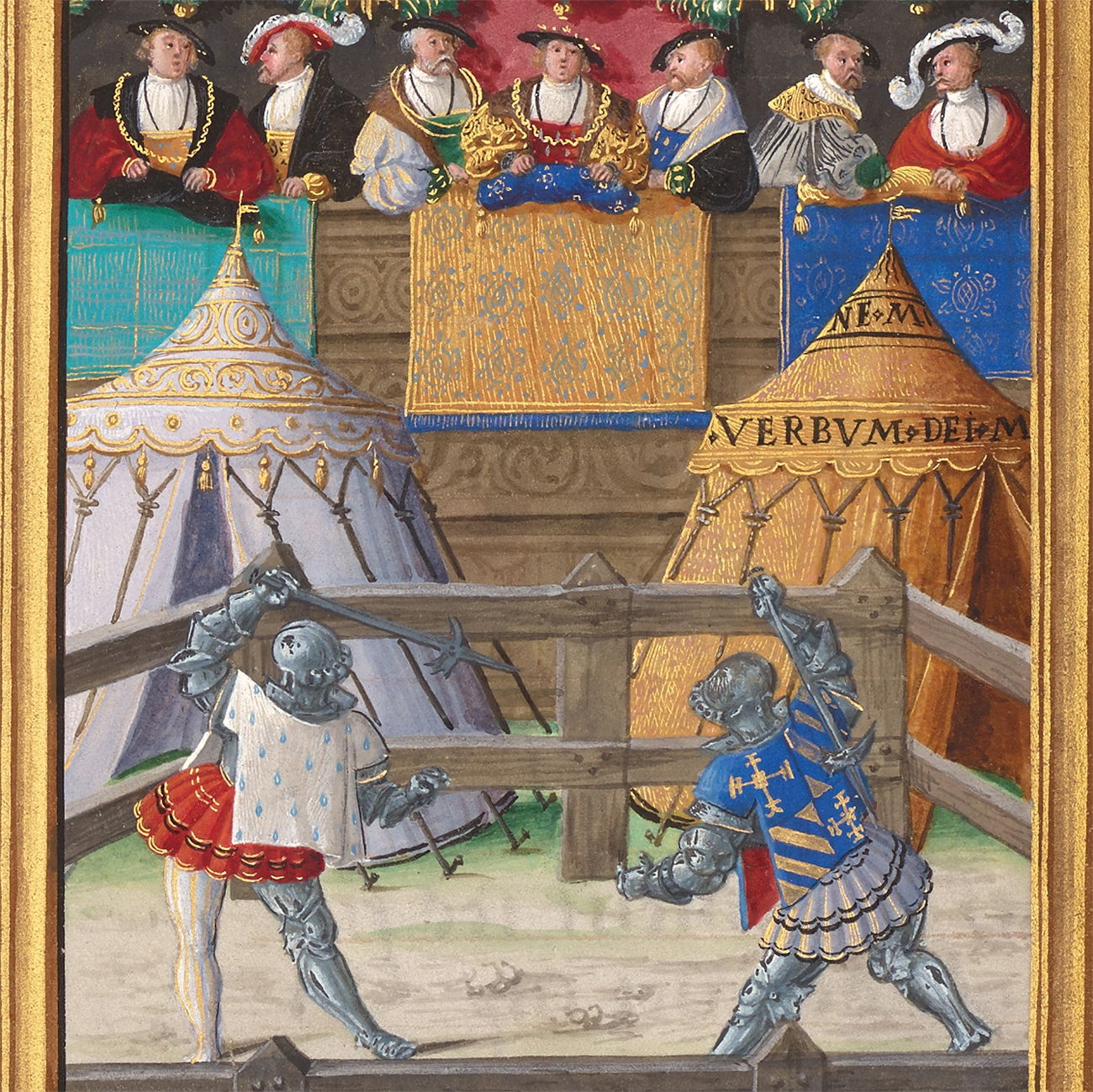
Jacques de Lalaing Fighting Jean Pitois at the Passage of Arms of the Fountain of Tears, about 1530–40, Circle of the Master of Charles V. Tempera colors and gold on parchment, 14 5/16 x 10 5/16 in. The J. Paul Getty Museum, Ms. 114, fol. 129v. Acquired in honor of Thomas Kren. Digital image courtesy of the Getty’s Open Content Program
And just as today, the coaches could become almost as famous as the athletes. Fencing master Fiore Furlan dei Liberi, was as much revered in his time as someone like Marta Karolyi is in ours. This copy of his training manual was made for Nicolò d’ Este, ruler of Ferrara (in modern-day Italy), father of several sons who might well have benefited from the examples pictured. In the images, the master is depicted with a gold band around his leg, often getting the better of his unfortunate pupils.
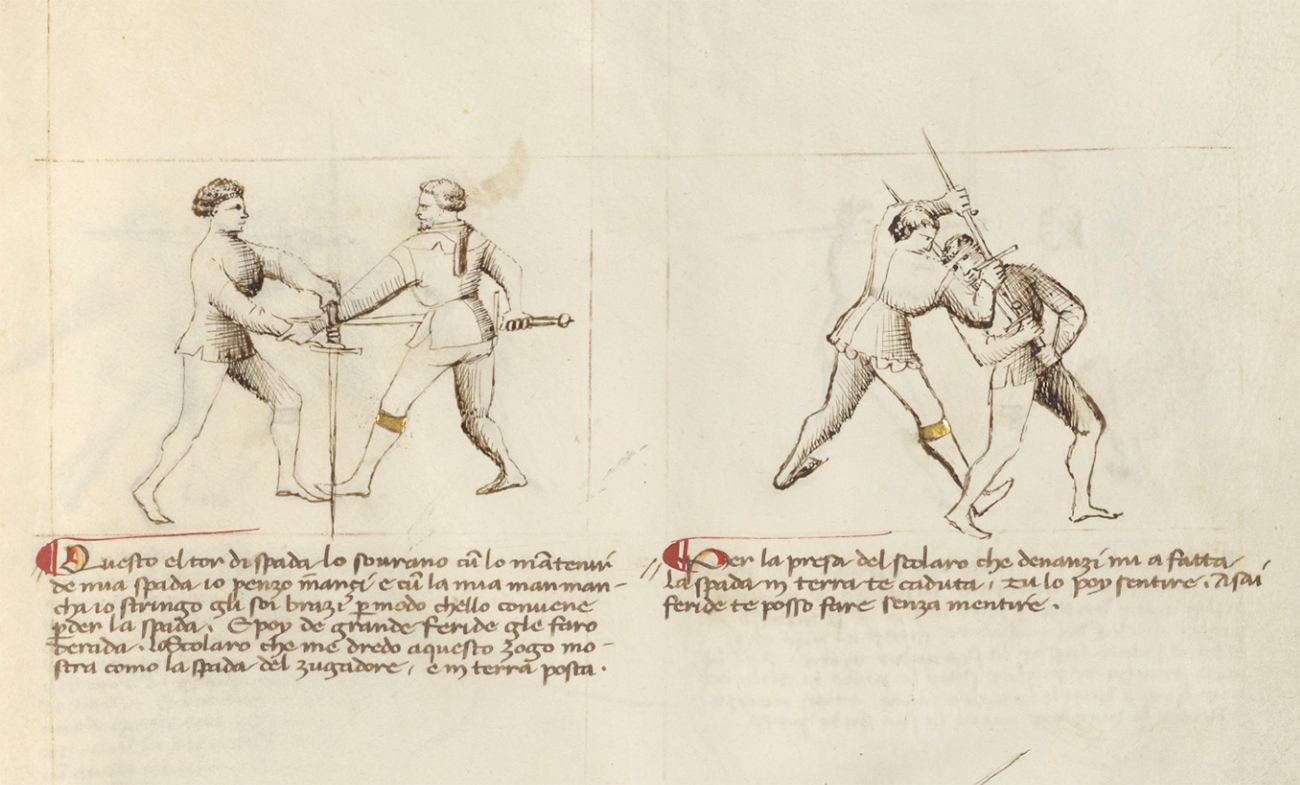
Combat with Sword, about 1340–50, unknown artist. Ink and gold on parchment, 11 x 8 1/8 in. The J. Paul Getty Museum, Ms. Ludwig XV 13, fol. 30. Digital image courtesy of the Getty’s Open Content Program
Many of the events we follow so enthusiastically today at the Olympics were also performed in the Middle Ages for fun or entertainment, including:
Rowing (more like bumper boats):

Reaping; Zodiacal Sign of Virgo (border detail), about 1510–20, Workshop of the Master of James IV of Scotland. Tempera colors and gold on parchment, 9 1/8 x 6 9/16 in. The J. Paul Getty Museum, Ms. Ludwig IX 18, fol. 5. Digital image courtesy of the Getty’s Open Content Program
Gymnastics (sadly, Prince William neglected to wear his crown while watching Olympic events in London):

The Competition in Sittacene and the Placating of Sisigambis, about 1470–75, Master of the Jardin de Vertueuse Consolation. Tempera colors and gold on parchment, 17 x 13 in. The J. Paul Getty Museum, Ms. Ludwig XV 8, fol. 99. Digital image courtesy of the Getty’s Open Content Program
Javelin Throw (bonus points for doing it from the back of a horse):

Initial E: A Knight on Horseback with a Lance, about 1290-1310, unknown artist. Tempera colors and gold on parchment, 14 3/8 x 9 7/16 in. The J. Paul Getty Museum, Ms. Ludwig XIV 6, fol. 229. Digital image courtesy of the Getty’s Open Content Program
And wrestling (with maybe a little Judo thrown in?):
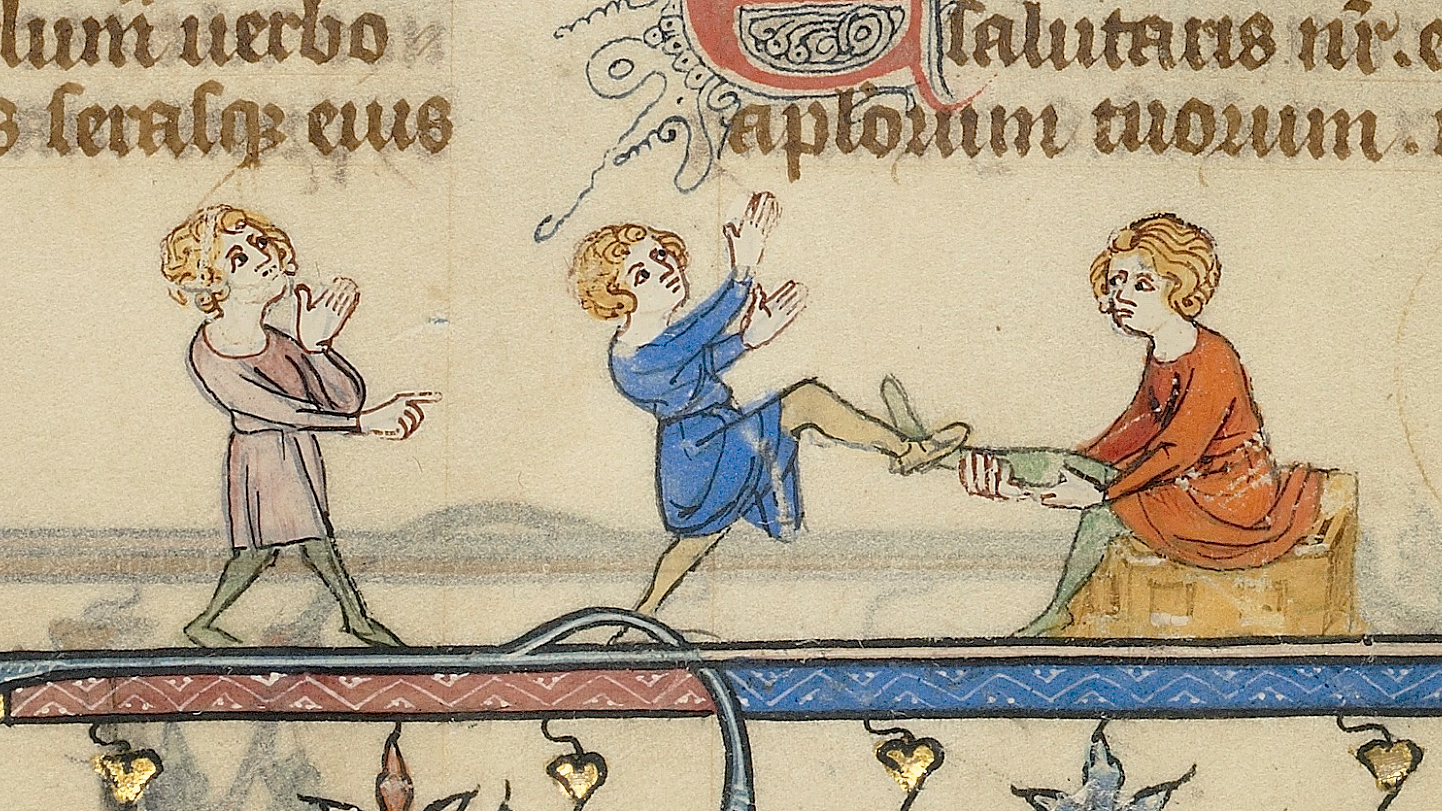
Initial T: The Twelve Apostles (border detail), about 1320-25, unknown artist. Tempera colors and gold on parchment, 6 9/16 x 4 3/8 in. The J. Paul Getty Museum, Ms. Ludwig IX 2, fol. 357. Digital image courtesy of the Getty’s Open Content Program
For other sports, we might have to use a little imagination to create a medieval equivalent.
Armor Swimming (one has to wonder how many golds Michael Phelps would win in this version!):

John of Gaunt Sailing for Brest and the Battle between the English and the Bretons, about 1480-83, Master of the Soane Josephus. Tempera colors and gold on parchment, 17 x 13 in. The J. Paul Getty Museum, Ms. Ludwig XIII 7, fol. 116v. Digital image courtesy of the Getty’s Open Content Program
Dragon Archery (is spitting fire really legal on the opponent’s side?):
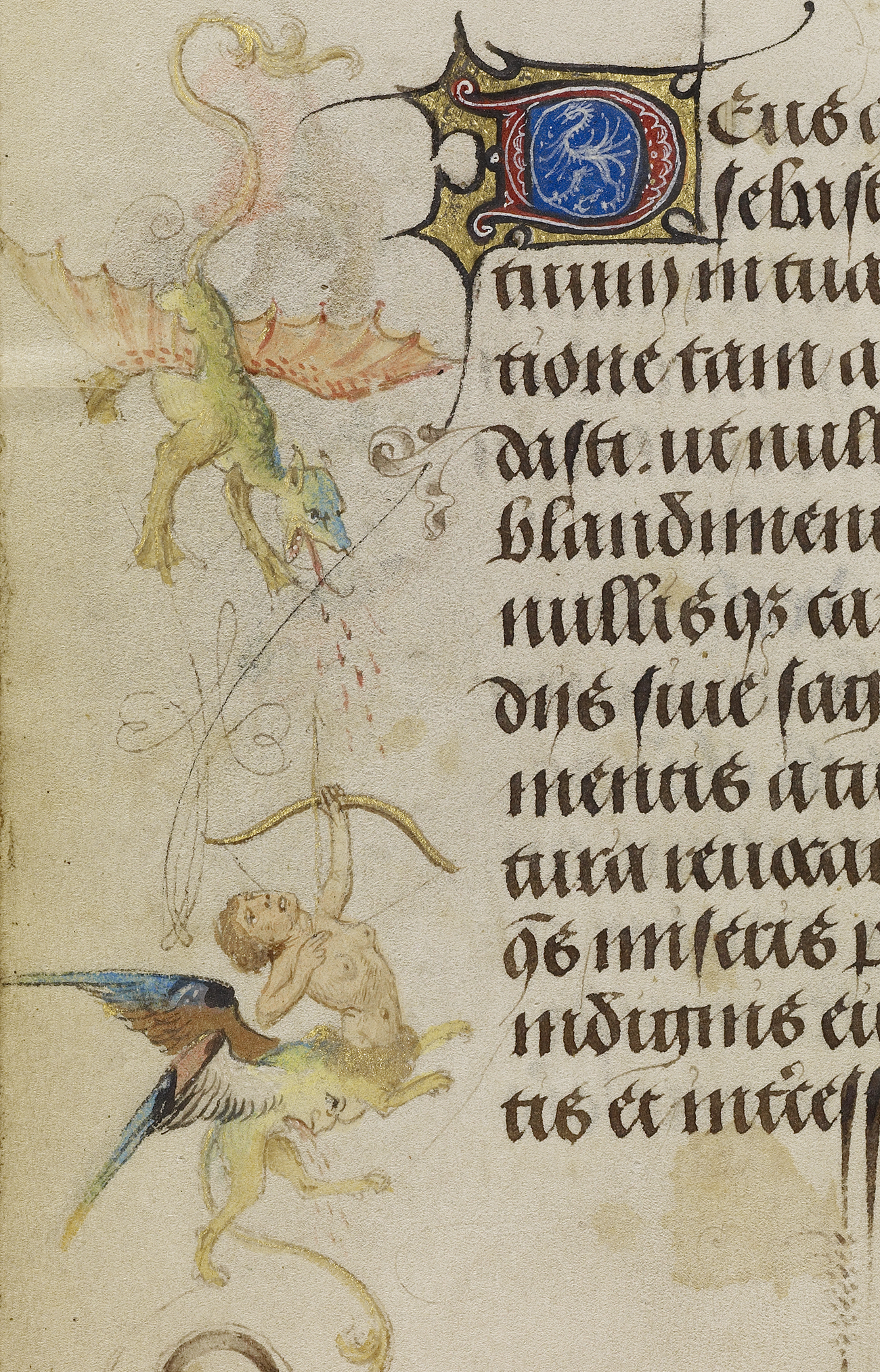
Decorated Text Page; Nicolas Spierinc (Flemish, active 1455 – 1499); Antwerp (illuminated), Belgium; 1469; Tempera colors, gold leaf, gold paint, silver paint, and ink on parchment; Leaf: 12.4 x 9.2 cm (4 7/8 x 3 5/8 in.); 89.ML.35.30v
Castle Weightlifting (in Samson’s case, the hair really does help):

Women at the Tomb (border detail), probably 1170s, unknown artist. Tempera colors and gold on parchment, 11 1/8 × 7 7/16 in. The J. Paul Getty Museum, Ms. 64, fol. 111. Digital image courtesy of the Getty’s Open Content Program
And my personal favorite…
Balance Beam Over Hellfire (although surely the start value would be less if you get your guardian angel to hold your hand):
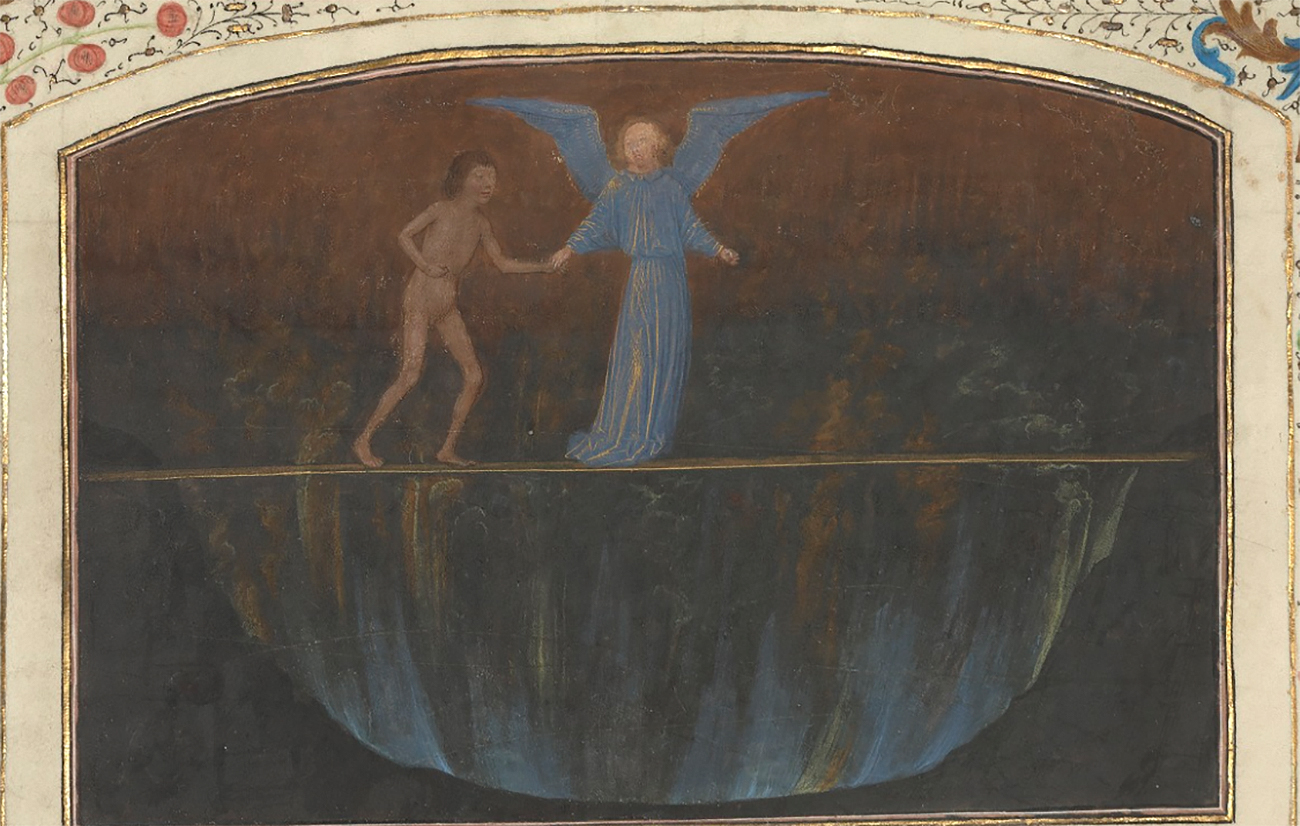
The Torment of the Proud – Valley of Burning Sulphur, 1475, Simon Marmion. Tempera colors and gold on parchment, 14 5/16 × 10 5/16 in. The J. Paul Getty Museum, Ms. 30, fol. 15v. Digital image courtesy of the Getty’s Open Content Program
Which medieval Olympic event would you pick?




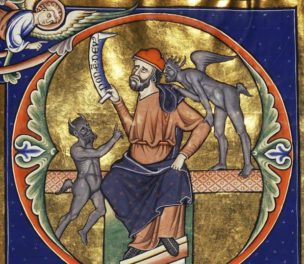
This Jaques de Lalaing is daring but crazy as well as very cocky. Had he not gotten any injuries he would be likened unto Beowulf by me. However,since he did, he will have to settle for being likened unto Chiron the wounded healer or perhaps the patriarch Jacob who also became ” handicap” after wrestling with the angel of God. After I enlarge the manuscript via my email,as I will be sending this to myself, I will then divulge on the quality of the manuscriot and its style.